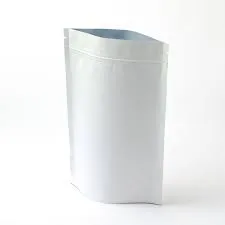- Afrikaans
- Albanian
- Amharic
- Arabic
- Armenian
- Azerbaijani
- Basque
- Belarusian
- Bengali
- Bosnian
- Bulgarian
- Catalan
- Cebuano
- chinese_simplified
- chinese_traditional
- Corsican
- Croatian
- Czech
- Danish
- Dutch
- English
- Esperanto
- Estonian
- Finnish
- French
- Frisian
- Galician
- Georgian
- German
- Greek
- Gujarati
- haitian_creole
- hausa
- hawaiian
- Hebrew
- Hindi
- Miao
- Hungarian
- Icelandic
- igbo
- Indonesian
- irish
- Italian
- Japanese
- Javanese
- Kannada
- kazakh
- Khmer
- Rwandese
- Korean
- Kurdish
- Kyrgyz
- Lao
- Latin
- Latvian
- Lithuanian
- Luxembourgish
- Macedonian
- Malgashi
- Malay
- Malayalam
- Maltese
- Maori
- Marathi
- Mongolian
- Myanmar
- Nepali
- Norwegian
- Norwegian
- Occitan
- Pashto
- Persian
- Polish
- Portuguese
- Punjabi
- Romanian
- Russian
- Samoan
- scottish-gaelic
- Serbian
- Sesotho
- Shona
- Sindhi
- Sinhala
- Slovak
- Slovenian
- Somali
- Spanish
- Sundanese
- Swahili
- Swedish
- Tagalog
- Tajik
- Tamil
- Tatar
- Telugu
- Thai
- Turkish
- Turkmen
- Ukrainian
- Urdu
- Uighur
- Uzbek
- Vietnamese
- Welsh
- Bantu
- Yiddish
- Yoruba
- Zulu
Innovative Solutions for Efficient Packaging of Powdered Goods and Products
Packaging for Powder Products Ensuring Quality and Convenience
In today's fast-paced world, the demand for powdered products has dramatically increased. From protein powders and spices to cleaning agents, consumers are looking for convenience, quality, and longevity. Therefore, effective packaging for powdered products is crucial, not only to preserve the integrity of the product but also to enhance user experience. This article explores the various aspects of packaging solutions for powdered products, focusing on materials, design, sustainability, and innovation.
Importance of Packaging
Packaging serves a fundamental purpose—protecting the product from environmental factors such as moisture, air, light, and contaminants. For powdered products, which are particularly susceptible to degradation, effective packaging is critical. Superior packaging can prevent clumping, maintain flavor, and prolong shelf life. Additionally, attractive and functional packaging can entice consumers, making it a vital marketing tool.
Packaging Materials
When it comes to choosing packaging materials for powdered products, several options are available
1. Plastic Containers High-density polyethylene (HDPE) and polypropylene (PP) are common choices. They are lightweight, cost-effective, and can be designed with resealable lids, ensuring product freshness after opening.
2. Glass Jars Glass is an excellent barrier against moisture and air, making it suitable for premium products like spices and protein powders. However, it is heavier and more fragile than plastic.
3. Foil Pouches These are increasingly popular for powdered goods due to their excellent barrier properties. Foil pouches can be vacuum-sealed, which minimizes the presence of oxygen, thus preserving the product's quality.
4. Paper Bags While not as protective as plastic or foil, paper bags are often used for bulk powders. They are biodegradable but may require additional liners to prevent moisture ingress.
5. Composite Materials Many producers are now employing multi-layer materials that combine the best characteristics of plastic, foil, and paper to ensure durability and moisture resistance.
Design Considerations
Effective design is integral to packaging success. The primary objective is to ensure that the user can easily access the product while maintaining its integrity. Key design elements include
packaging for powder products

- Resealable Features Packaging that can be resealed after use helps in retaining product freshness and prevents contamination. Zipper pouches and twist-off lids are popular mechanisms.
- Portion Control For certain powdered products, especially those used in dietary supplements, incorporating scoops or single-serve packets can encourage proper dosing and enhance the user experience
.- Clear Labeling Transparent windows or clear labeling helps consumers see the product inside. This transparency builds trust and informs consumers about the ingredients, nutritional content, and usage instructions.
Sustainability in Packaging
As environmental concerns continue to rise, sustainability in packaging is becoming increasingly important. Eco-friendly packaging not only meets consumer demand but also aligns with corporate social responsibility goals. Some sustainable practices include
- Biodegradable Materials Using materials such as PLA (polylactic acid) derived from cornstarch or recycled paper can minimize ecological impact.
- Minimal Packaging Reducing excess material can help decrease waste. Brands are exploring bulk options and refill stations to encourage lower consumption.
- Recyclable Designs Manufacturers are focusing on creating easily recyclable packaging to ensure that end-users can responsibly dispose of it.
Innovations in Powder Packaging
The packaging industry is experiencing rapid innovation, with technologies such as intelligent packaging gaining traction. These smart solutions can provide real-time data about product freshness, quality, and even changes in environmental conditions.
Moreover, advances in nanotechnology offer breakthroughs in creating better barrier materials that can enhance product preservation without adding weight or bulk. Such innovations are crucial for maintaining the quality of sensitive powder products.
Conclusion
The packaging of powdered products is a multifaceted challenge that requires careful consideration of materials, design, sustainability, and technological advancement. As consumer expectations evolve, the packaging industry must adapt to meet these demands while ensuring the quality and integrity of powdered goods. A seamless blend of functionality, aesthetics, and environmental responsibility will define the future of powder product packaging.













